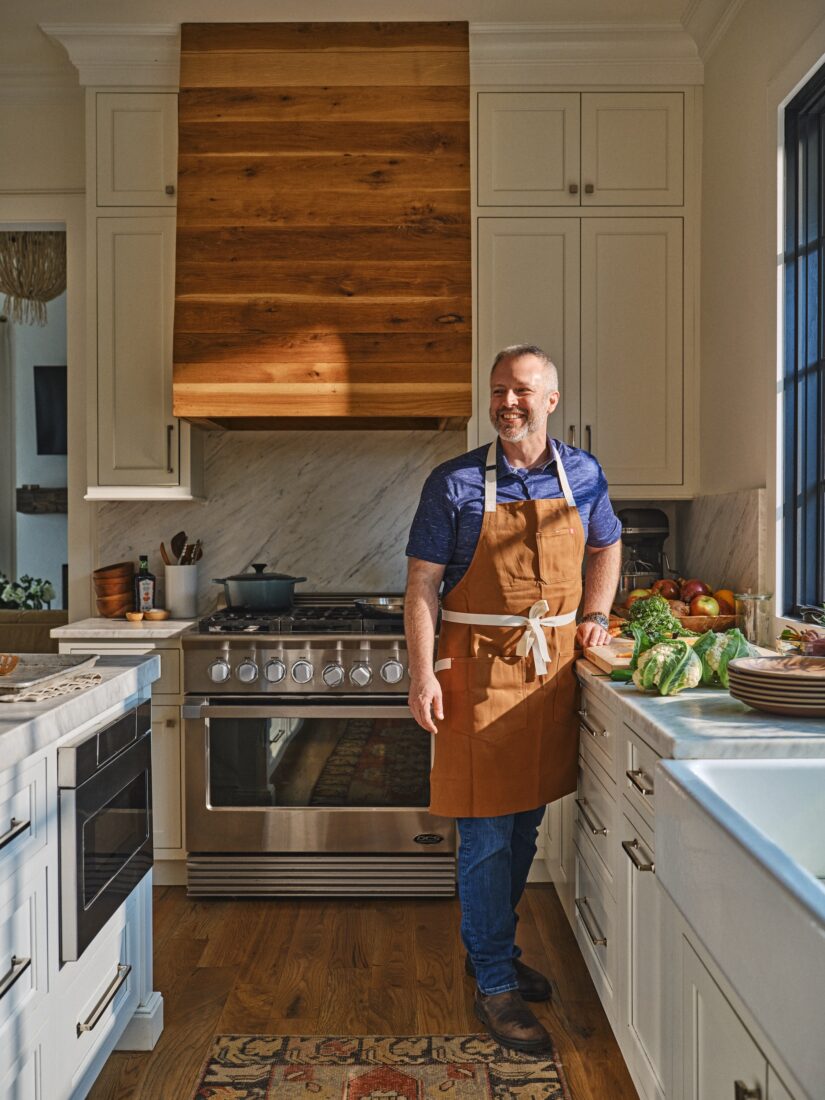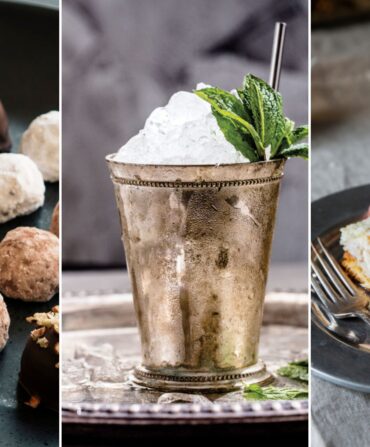On April 2, Chef William Dissen will release his first cookbook, Thoughtful Cooking: Recipes Rooted in the New South. On April 3, he’ll find out if the Market Place, the beloved Asheville restaurant he has helmed for fifteen years, will be shortlisted for a James Beard Outstanding Restaurant award following its longlist nomination in January. In June, on the same day the award is announced, the Market Place will celebrate its forty-fifth birthday.
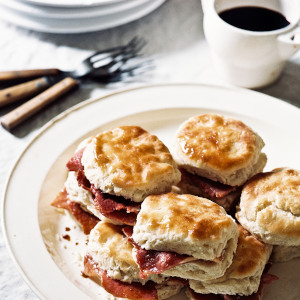
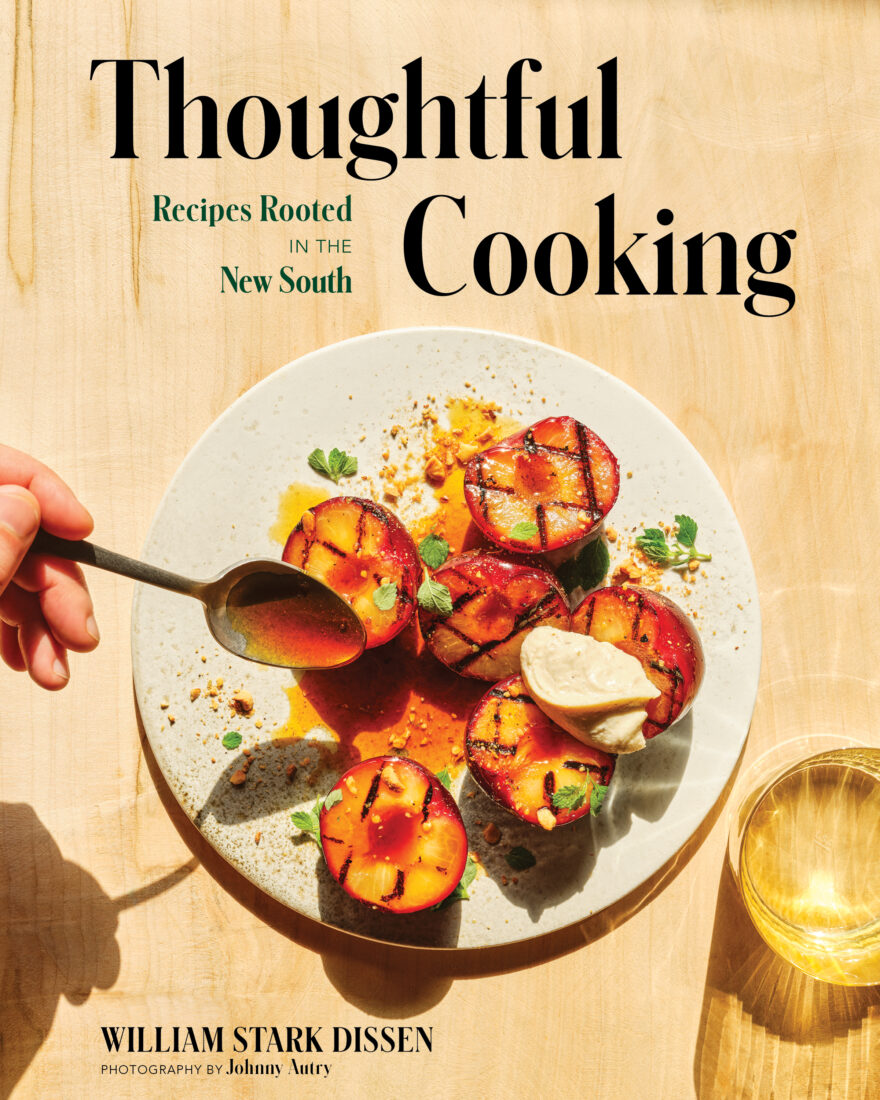
Needless to say, it’s a busy season for Dissen, who also opened the Haymaker in Charlotte in 2017 and owns Billy D’s Fried Chicken, with locations at Wake Forest University, Elon University, and the North Carolina Zoo. But the Appalachian-born chef still prioritizes getting outside, visiting farmers’ markets, and taking time in the kitchen—and now, through his forthcoming cookbook, inspiring readers to do the same.
“Thoughtful Cooking is about shifting your mindset and unfolding from within, allowing yourself to explore and be curious. It’s a form of self-care,” he writes in the introduction. In line with Dissen’s M.O. of farm-to-table, seasonal-ingredient-central cooking, the book organizes itself by the bounty of spring, summer, fall, and winter. In spring, for example, Dissen says to be on the lookout for things like spinach, morels, fennel, mint, fava beans, and wild ramps—and turn them into dishes like pea- and ricotta-stuffed morel mushrooms with romesco sauce; fava beans and charred spring onions with watercress, feta, and sherry thyme vinaigrette; or wild ramp and new potato bisque.
Below, we caught up with Dissen about some of his favorite dishes from the cookbook, what inspires him in the kitchen…and pouring bourbon down a ham leg.
First things first…what about this James Beard nomination? Congratulations! You must be so excited.
Oh yeah. One of my friends called me and said, “You need to sit down. You just got nominated for a James Beard Award…and not for Best Chef Southeast. Your restaurant got nominated for Outstanding Restaurant in America.” I was like…I need a minute.
But I’ve been in the game a long time. Honestly, we just keep working and doing our thing. It will be the forty-fifth anniversary of the Market Place this year…I think consistency and quality is what’s kept us alive for so long.
That must start with great recipes. What’s your creative process like?
I really like to cook in the moment. I like going to the markets, talking to my farmers to know what’s in season. I have notes in my phone and reminders that say things like, wild ramp season starts in two weeks. There’s also all these micro seasons within where we live, for things like wineberries. I really get inspired by an ingredient. And then I look for the flavors. Do I want to make something a little spicier? Do I want it to be a little more acidic? Does it need to be a little bit sweeter? How can I balance it? And then textures—maybe there is something smooth, something crunchy. It’s about making your mouth happy.
The really hard part about being a chef is that I can cook for myself and make it exactly how I like it. But when I’m cooking for the masses, I need to give people food that I love, but then take the time to ask questions and be thoughtful…when I make a recipe in the restaurant, I grab a bin full of spoons and I make everybody in the kitchen taste it and tell me straight what they think.
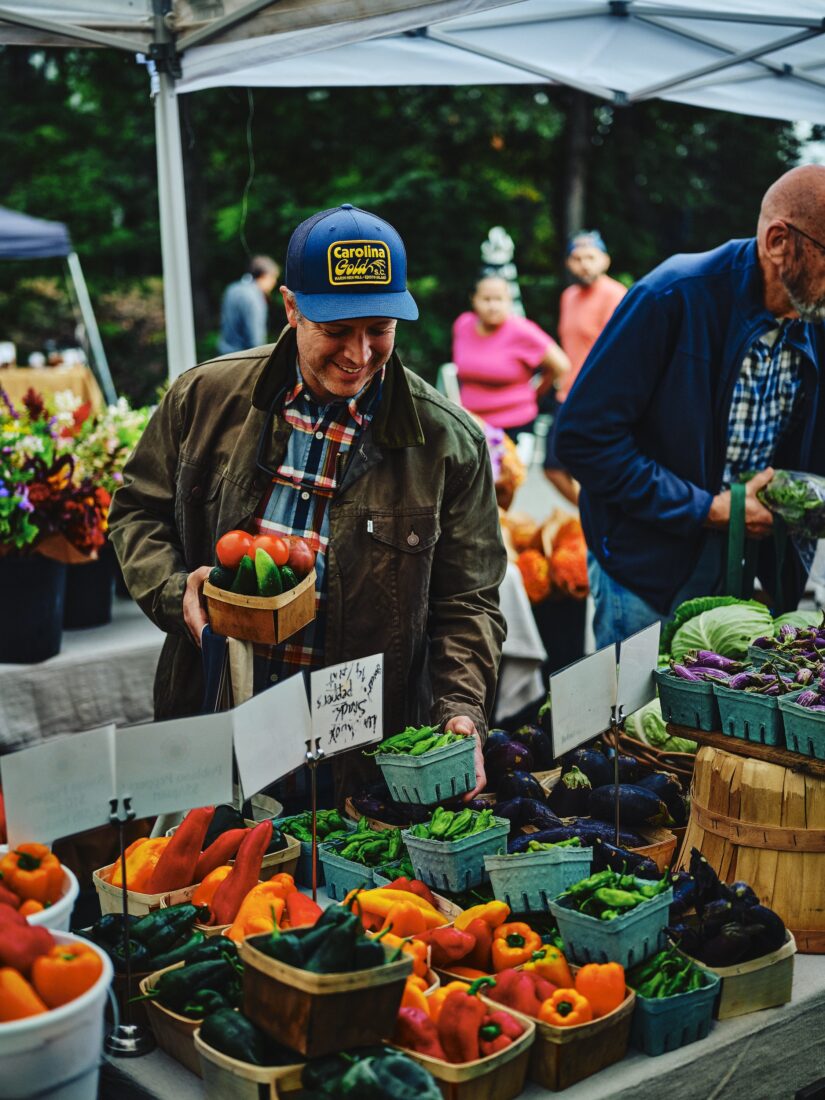
What made you decide to get all these recipes out there in a cookbook?
The concept of thoughtful cooking reflects my upbringing in West Virginia, and where I live here in Asheville. We’re fortunate because we have four true seasons and access to nature. I wanted the book to be about being connected. It is a seasonal cookbook, but I wanted to take it a little bit deeper into how food connects us with others, and how it connects us with the environment. Our choices in how we eat can affect the world around us. I’m not trying to beat people over the head, but we can vote with our fork if we take a moment to think about how we eat. That self-advocacy is something a lot of us may have lost in our day-to-day doom scrolling.
The South is evolving in its mindset and connection to food. There are so many different people who have immigrated here, and the cultures have really come together. It’s important to look to the future and where we’re going, but also to recognize our heritage. In looking to the past, we see this connection to farms. I would guarantee if I asked you, you would tell me that your grandparents or great-grandparents were probably farmers or at least grew a garden. You ask most Southerners that, and that’s the case. Taking that time to connect and remember our roots is really important.
I’ve talked to you before about foraging, and that topic pops up in the cookbook.
Take the ramp and potato bisque. That’s a riff on a traditional French vichyssoise, leek and potato soup. It’s a recipe I’ve played with for years. You can use leeks or scallions in the recipe if you can’t find access to ramps. But in the given season, especially if you’re on the East Coast, head over to your farmers’ market and you’re likely to find some wild ramps there. When you omit leeks and add ramps…it’s like, wow, this is good. Ramps are only available in the wild, and they’re only available during a very short period of time. It’s this elusive ingredient. I love to showcase that and other wild food however I can.
I know this is going to be a hard one. But if you had to pull out some of your favorite recipes from the cookbook…
I mean, there is a recipe for Billy D’s fried chicken in there. I think it’s great for gathering. There’s a really good beef short rib recipe, especially for this time of year when it’s still a little cooler. And the cornmeal and olive oil cake is delicious.
Tell me about the dulce de leche brownies.
I did a stint in Southern California, and I got to cook with a lot of Latino chefs. They really turned me on to making homemade dulce de leche. And then, growing up in Appalachia, did you ever see the jars of marshmallow fluff and have fluffernutter sandwiches? I had an epiphany years ago. I thought, what if I make homemade fluff and then take a torch over it so it’s almost like eating a s’more? It’s definitely been a home-run recipe.
I also have to ask about the mac and cheese recipe that has Benton’s country ham in it. We did a bacon blind taste test in the office a few months ago, and out of ten or twelve different bacons, we pretty much all ranked Benton’s first.
Hey, it’s good to be king. I was on the phone with Alan a couple days ago, in celebration of our James Beard nomination…I asked if I could get one of his twenty-six-month aged hoof-on hams. We have a little parlor trick that I do for events. We get this fancy Spanish ham stand and we mount the ham on it with the hoof, and then we carve a hole in it and we pour bourbon down it.
Good lord, can I come?
Right? Anyway, the mac and cheese has this light smokiness to it. I was making a family meal at the restaurant one day, and I made this recipe. Typically a mornay sauce, a roux…you add flour into your base and that helps thicken the cheese sauce. But I didn’t want to use flour. So I did the reduction method of reducing wine and cream down to get the consistency I wanted. I put four different cheeses in it: smoked cheddar, cream cheese, goat cheese, Parmesan cheese. I had made this herb salad crust for another lamb dish I was doing, and I thought, mac and cheese needs some crunchy stuff on it, plus Benton’s country ham. [When I served it] it got real quiet. That recipe is now on the menu at every restaurant I own.
Tell me what the visuals process was like for the cookbook. Johnny and Charlotte Autry do a lot of our food photography in the magazine.
When they moved to Asheville ten or twelve years ago, I had to do a Thanksgiving shoot with them. I had done a lot of food photography by then, and I thought I was pretty good. We had this pork loin wrapped in Benton’s bacon. I went to plate it, and Charlotte said, “No, no, no, let me help.” And I was thinking, nobody touches my food. And she says, “I’m getting paid to do it.” So she styled it, and Johnny shot it. And after that moment I was like, okay, I’m not worthy.
So when people come to this cookbook, how do you hope they use it?
I really want to take the readers and the cooks on a vibe shift from thirty-minute meal cookbooks. And don’t get me wrong, I’ve got kids and I get home from work some days and it’s more intense than being on the line in the kitchen. But I want people to spend time cooking. Open a bottle of wine. Turn the music up. Just enjoy. There’s always going to be the next thing on your schedule…but a few times a week it’s important to slow down and cook because there’s more to it than just sustaining your body. It’s sustaining your mind and your soul, and it connects you with the people that are near and dear to you.
Lightning last question—what was the last thing you cooked at home?
Let’s see. Today I made tomato soup. And then I had a country loaf from OWL Bakery and some leftover chicken thighs and some Benton’s bacon. I caramelized some onions and garlic with balsamic, made a little chive lemon mayonnaise, and put it into a panini and had that with tomato soup for lunch. It was pretty simple. I just raided the fridge. I think that’s part of thoughtful cooking, right? You create formulas in your head and you just know what flavor profiles are friends.
Garden & Gun has an affiliate partnership with bookshop.org and may receive a portion of sales when a reader clicks to buy a book.


